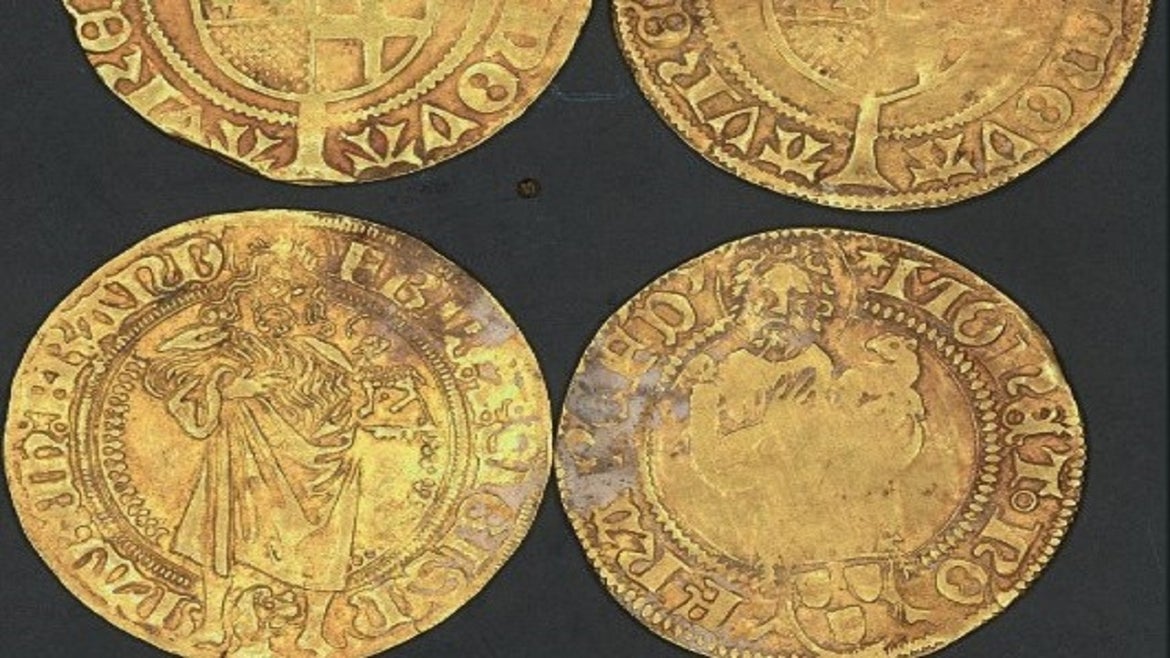Archaeologists in Germany have just discovered a handful of 500-year-old gold coins hidden in the ruins of a monastery.
Archaeologists excavating a medieval monastery in Germany found four gold coins worth a small fortune. They were likely hidden by a monk during an uprising by rebel farmers, scientists said.
The Himmelpforten monastery was the refuge of Augustinian Hermit monks from 1253 to the 16th century. The coins may have been secreted away during a 1525 battle, archaeologists said, according to German media accounts.
"The gold coins were of great value, and the small fortune was probably hidden by a monk in an acutely dangerous situation," project manager and archaeologist Felix Biermann of the Saxony-Anhalt State Office for Monument Preservation and Archeology told German news agency Deutsche Presse-Agentur.
"The whole thing did not end well because the coins could not be recovered," he said.
The coins were minted in different places at different times and date to the 1400s, scientists said.
Besides the coins, archaeologists found ceramics, animal bones and brass book clasps used in the monastery's library, scientists said.
Ornate seat cloths made from lead were also discovered. The artifacts, according to the archaeologists, indicated a prosperous monastic community involved in large-scale trading.
Related Stories






